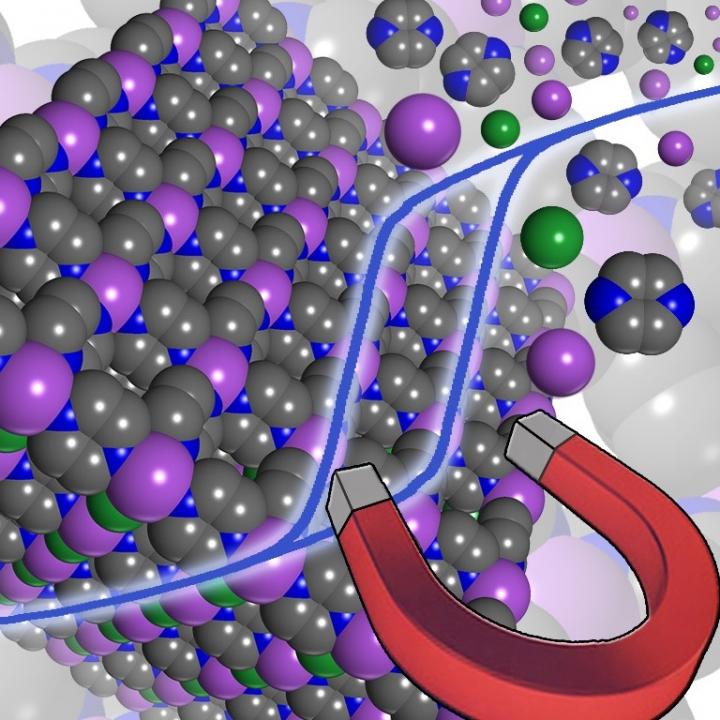Towards next-generation molecule-based magnets

Pictorial representation of the molecule-based magnet and its magnetic properties.
Credit: Rodolphe Clérac
Magnets are to be found everywhere in our daily lives, whether in satellites, telephones or on fridge doors. However, they are made up of heavy inorganic materials whose component elements are, in some cases, of limited availability. Now, researchers from the CNRS, the University of Bordeaux and the ESRF (European Synchrotron Radiation Facility in Grenoble)* have developed a new lightweight molecule-based magnet, produced at low temperatures, and exhibiting unprecedented magnetic properties. This compound, derived from coordination chemistry**, contains chromium, an abundant metal, and inexpensive organic molecules. This is the first molecule-based magnet that exhibits a ‘memory effect’ (i.e. it is capable of maintaining one of its two magnetic states) up to a temperature of 240 °C. This effect is measured by what is known as a coercive field, which is 25 times higher at room temperature for this novel material than for the most efficient of its molecule-based predecessors. This property therefore compares well with that of certain purely inorganic commercial magnets. The discovery, published on 30th October in Science, opens up highly promising prospects, which could lead to next-generation magnets complementary to current systems.
###
* The scientists work at the Centre de Recherche Paul Pascal (CNRS/Université de Bordeaux), Institut de Chimie de la Matière Condensée de Bordeaux (CNRS/Université de Bordeaux), Laboratoire Ondes et Matière d’Aquitaine (CNRS/Université de Bordeaux) at the Institut des Sciences Moléculaires (CNRS/Université de Bordeaux/Bordeaux INP), and ESRF – the European Synchrotron Radiation Facility.
** Coordination chemistry focuses on the combination of metals and ligands at the molecular level.
All latest news from the category: Physics and Astronomy
This area deals with the fundamental laws and building blocks of nature and how they interact, the properties and the behavior of matter, and research into space and time and their structures.
innovations-report provides in-depth reports and articles on subjects such as astrophysics, laser technologies, nuclear, quantum, particle and solid-state physics, nanotechnologies, planetary research and findings (Mars, Venus) and developments related to the Hubble Telescope.
Newest articles

A blueprint for mapping melting ice sheets
Researchers in the Stanford Radio Glaciology lab use radio waves to understand rapidly changing ice sheets and their contributions to global sea-level rise. This technique has revealed groundwater beneath Greenland,…

Water hyacinth plant pots – utilization of an invasive species
Together with Fiber Engineering GmbH, the DITF presents a process for the production of biodegradable plant pots. The products are cost effective and competitive. At the same time, the production…

Current research on the new 6G mobile communications standard
Nursing care robots, autonomous driving, digital twins: all of these high-tech applications will play an essential role for the new 6G mobile communications standard. The first commercial 6G networks are…



